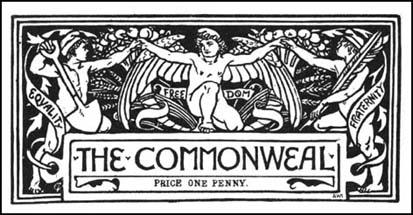The Socialist League (1884) (original) (raw)
- British History >
- History of Socialism >
- The Socialist League (1884)
In 1884 a group of members of the Social Democratic Federation (SDF) attempted to remove H. H. Hyndman from the leadership of the party. This group objected to his nationalism and the dictatorial methods he used to run the party.
At a meeting of the Social Democratic Federation executive on 28th December, 1884, there was a heated about Hyndman's leadership. There were complaints about his control over the the party's journal, Justice. Others were unhappy about H. H. Hyndman tendency to expel members he disagreed with. The SDF executive voted by a majority of two (10-8), that it had no confidence in Hyndman.
Some members, including William Morris, Eleanor Marx, Ernest Belfort Bax and Edward Aveling decided to leave the SDF and formed a new organisation called the Socialist League. Several SDF branches, such as those in East London, Hammersmith and Leeds, joined the new organisation. Other important figures in the movement such as Edward Carpenter and Walter Crane also became members of the Socialist League.

Walter Crane designed the heading for the Commonweal journal in 1885
Socialist League published a manifesto written by William Morris and Ernest Belfort Bax that advocated revolutionary international socialism. The group also produced its own journal, Commonweal. However, William Morris was disappointed by the slow growth of the organisation. After six months the Socialist League only had eight branches and 230 members. Morris wrote to a friend: "I am in low spirits about the prospects of our party, if I can dignify a little knot of men by such a word. You see we are such a few, and hard as we work we don't seem to pick up people."
Britain's economic problems in the 1880s helped to revive interest in the Socialist League. By January 1887 the membership of the party reached 550. However, many members were unemployed and too poor to pay subscriptions. The treasurer reported that only 280 members were able to contribute to party funds.
In 1887 John Bruce Glasier, and unemployed craftsman formed a branch in Glasgow. Within a few months Glasier reported that it had 53 members. When Glasier organised on open-air meeting in the city, an estimated 20,000 people heard a series of speeches on socialism. The Socialist League continued to grow and by 1895 had over 10,700 members. Numbers declined after this and when the organisation disbanded in 1901 it was down to less than 6,000.
Primary Sources
(1) William Morris, letter to Mrs. Burne-Jones (13th May, 1885)
I am in low spirits about the prospects of our party, if I can dignify a little knot of men by such a word. You see we are such a few, and hard as we work we don't seem to pick up people.
(2) In his book, My Days and Dreams, Edward Carpenter described joining the Socialist League in 1885.
Early in 1888 one or two of us got together to establish our own Sheffield Socialist Society. We persuaded William Morris to come down (early in March). At that time, William Morris, having with a few others parted from the Socialist League - branches of which were springing up merrily all over the country. And it was William Morris's great hope, often expressed in the Commonweal and elsewhere, that these branches growing and spreading, would before long "reach hands" to each other and form a network over the land - would constitute in fact the New Society within the framework of the old. There seemed a good hope for the realization of Morris' dream - and most of us shared in it. But history is a difficult horse to drive. The little Socialist League societies after flourishing gaily for a few years - suddenly began to wane and die out.
(3) In 1887 William Morris recorded in his diary details of a letter he had received from John Bruce Glasier.
AI have an excited letter from the Glasgow branch: they have held a big meeting there Sunday in sympathy with the Lanarkshire miners: more than 20,000 present they say: which as they collected £24 (in coppers chiefly) seems likely.